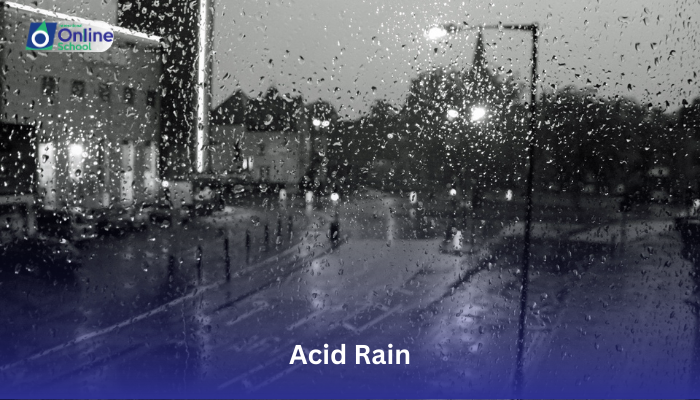
Learning Outcomes:
i. Define and explain the concept of acid rain, including its chemical composition and formation.
ii. Analyze the human activities that contribute to acid rain formation.
iii. Describe the diverse effects of acid rain on ecosystems, infrastructure, and human health.
iv. Appreciate the importance of environmental awareness and proactive measures to mitigate acid rain's impact.
Introduction:
Imagine a world where the rain falls not as a gentle blessing, but as a corrosive curse. This is the reality of acid rain, a phenomenon where rainwater becomes unnaturally acidic due to the presence of pollutants. Today, we embark on a journey to understand the causes and consequences of this environmental threat, uncovering the human fingerprints on this acidic downpour and the urgent need for action.
i. The Sour Brew: Unveiling Acid Rain's Chemistry:
Acid rain isn't just plain water; it's a cocktail of sulfuric and nitric acids, formed when sulfur dioxide and nitrogen oxides released from human activities like power plants and vehicles react with water vapor in the atmosphere. Imagine the atmosphere as a giant mixing bowl, where these pollutants combine with water to form a sour concoction.
ii. The Polluters' Symphony: Human Activities and Acid Rain:
Several human activities contribute significantly to acid rain formation:
Fossil fuel combustion: Burning coal, oil, and gas in power plants and vehicles releases sulfur dioxide and nitrogen oxides, the key ingredients in acid rain's recipe. Imagine plumes of smoke from chimneys and exhaust pipes pouring these pollutants into the air, contaminating the atmospheric soup.
Industrial processes: Factories and other industrial facilities release sulfur dioxide and nitrogen oxides as byproducts of their operations, adding another layer of acidity to the rain's composition. Think of smokestacks as chimneys spewing acidic fumes, further souring the atmospheric broth.
Intensive agriculture: Fertilizers used in agriculture can release ammonia, which contributes to acid rain formation. Imagine vast fields treated with fertilizers, unknowingly adding a bitter twist to the rain cycle.
iii. The Bitter Harvest: Acid Rain's Impact on Ecosystems and Beyond:
Acid rain has a wide range of detrimental effects:
Damage to ecosystems: Acid rain harms forests, lakes, and rivers, disrupting food webs, killing fish and wildlife, and altering delicate ecosystems. Imagine a once vibrant forest withering under the acidic downpour, its leaves turning brown and fragile like paper.
Erosion of infrastructure: Acid rain corrodes buildings, statues, and bridges, causing structural damage and costly repairs. Imagine limestone sculptures slowly dissolving in the acidic rain, their beauty fading like memories washed away.
Human health concerns: Acid rain can exacerbate respiratory problems, contribute to lung damage, and impact air quality. Imagine lungs, once organs of effortless breathing, struggling against the acidic mist, their delicate tissues irritated and inflamed.
iv. The Antidote for the Downpour: Mitigating Acid Rain's Impact:
Combating acid rain requires collective action:
Reduce pollutant emissions: Transition to cleaner energy sources like solar and wind power, implement stricter emission regulations for industries, and promote sustainable transportation options. Imagine switching the fuel from coal to sunshine, the smoke-filled chimneys replaced by gleaming solar panels.
Protect forests and natural ecosystems: Conserve forests, restore wetlands, and promote sustainable agricultural practices that minimize ammonia emissions. Imagine a vibrant tapestry of life woven back together, with forests acting as natural filters against the acidic rain.
Raise awareness and advocate for change: Educate communities about acid rain's impact, encourage responsible environmental practices, and hold polluters accountable. Imagine a chorus of voices rising against the acidic tide, demanding a cleaner, healthier planet for all.
Acid rain is a potent reminder of our interconnectedness with the environment. Our actions have consequences, and the bitter rain is a stark manifestation of our unsustainable practices. But amidst the acidic downpour, hope remains. By understanding the causes, appreciating the consequences, and taking proactive measures, we can turn the tide towards a future where rain falls as a refreshing blessing, not an environmental curse. Remember, every action, every choice, however small, can contribute to a cleaner atmosphere and a more resilient planet for generations to come.